Houseplant Refresh: Spring Cleaning and Repotting Tips
As winter fades and the days grow longer, it’s time to refresh your houseplants and help them transition into a season of new growth and vitality. Just like outdoor plants, houseplants wake up in spring, making it the perfect time for repotting, fertilizing, and pest prevention.
At D.R. Snell Nursery, we have everything you need to give your houseplants a fresh start—from high-quality potting soil to the best fertilizers and stylish decorative pots. Follow our spring cleaning and repotting guide to keep your indoor jungle happy and thriving all season long!
1. Assess Your Houseplants
Before diving into repotting and fertilizing, take a few moments to inspect your houseplants. Look for:
✅ Overcrowded roots – If roots are growing out of drainage holes or circling inside the pot, it’s time to repot.
✅ Compacted or depleted soil – Over time, soil loses nutrients and becomes dense, making it harder for roots to breathe.
✅ Pest problems – Check under leaves and in the soil for pests like spider mites, fungus gnats, or mealybugs.
✅ Yellowing leaves or stunted growth – These are signs your plant may need fresh soil and fertilizer.
📍 Need help choosing the right supplies? Stop by D.R. Snell Nursery for expert advice!
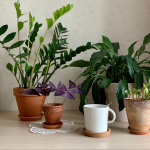
2. Time to Repot: When & How
When to Repot
Most houseplants benefit from repotting every 1-2 years, but fast growers or root-bound plants may need it sooner. Spring is ideal because plants are in active growth and recover quickly.
How to Repot Like a Pro
1️⃣ Choose the Right Pot – Pick a container 1-2 inches larger than the current one. Make sure it has drainage holes! Our selection of decorative pots at D.R. Snell Nursery will add a stylish touch to your space.
2️⃣ Use Quality Potting Soil – A light, well-draining mix is key. We recommend FoxFarm Coco Loco Potting Soil, which is rich in nutrients and holds moisture without becoming soggy.
3️⃣ Gently Remove the Plant – Loosen the roots carefully. If they’re circling the pot, gently tease them apart to encourage outward growth.
4️⃣ Add Fresh Soil – Place a layer of FoxFarm Coco Loco at the bottom of the new pot, set the plant inside, and fill around the roots. Press lightly to eliminate air pockets.
5️⃣ Water Thoroughly – Use a watering can with an easy-pour spout for even moisture. Be sure to place a saucer under the pot to protect furniture and floors!
📍 Find FoxFarm Coco Loco and beautiful new pots at D.R. Snell Nursery today!
3. Fertilize for Healthy Spring Growth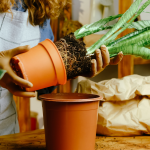
After a long winter, houseplants need a nutrient boost to fuel their spring growth. Start fertilizing about 2-4 weeks after repotting to avoid shocking the roots.
🌿 Best Fertilizer: We highly recommend Jack’s Classic Houseplant Fertilizer for vibrant leaves and strong root development. Its balanced nutrients provide steady, healthy growth without overfeeding.
Fertilizing Schedule for Spring
✔️ March-April: Begin feeding every 2-4 weeks, depending on plant type.
✔️ May-August: Increase to every 2 weeks as plants enter peak growing season.
✔️ September-February: Reduce or stop fertilizing as growth slows.
💡 Pro Tip: Don’t Fertilize a dry plant always fertilize after watering to prevent root burn!
📍 Pick up Jack’s Classic Houseplant Fertilizer at D.R. Snell Nursery for the best results!
4. Spring Pest Prevention
Warmer weather means more active pests, so take these steps to keep your plants pest-free:
🐜 Check for Pests Weekly – Inspect leaves (especially the undersides) and soil for tiny insects, webbing, or sticky residue.
💦 Wipe Leaves Clean – Dust buildup can attract pests. Use a damp cloth to gently clean leaves and improve light absorption.
🪲 Use Neem Oil or Insecticidal Soap – These natural treatments help control spider mites, mealybugs, aphids, and fungus gnats without harming your plants.
🌱 Keep Soil Fresh – Repotting with FoxFarm Coco Loco helps prevent fungus gnats by improving drainage.
📍 Visit D.R. Snell Nursery for organic pest control solutions!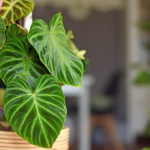
5. Water Wisely
Spring’s warmer temperatures and increased light mean your plants will need more water. However, overwatering can be just as harmful as underwatering!
🚰 How to Water Smartly:
✔️ Use a watering can with an easy-pour spout for precise control—no more messy spills!
✔️ Check soil moisture before watering by sticking your finger 1-2 inches deep. Water only when it feels dry.
✔️ Use saucers to catch excess water and protect surfaces.
📍 Shop stylish watering cans and saucers at D.R. Snell Nursery!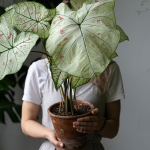
Refresh Your Houseplants This Spring!
A little spring cleaning and repotting can work wonders for your houseplants, setting them up for lush, healthy growthall year long. With the right soil, fertilizer, and care routine, your indoor garden will thrive.
🌱 Ready to refresh your houseplants? Stop by D.R. Snell Nursery today for:
✅ FoxFarm Coco Loco Potting Soil – for moisture balance and rich nutrients.
✅ Jack’s Classic Houseplant Fertilizer – for strong, healthy growth.
✅ Decorative pots, watering cans, and saucers – to complete your plant refresh.
✅ Expert advice to help your houseplants flourish!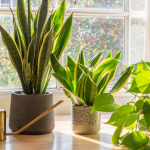
Let’s give your indoor jungle the care it deserves this spring—visit us at D.R. Snell Nursery today! 🌿






 hollyhocks, delphiniums, and foxgloves. Whether you’re starting from scratch or refining an existing space, this guide will walk you through everything you need to know about planning a romantic, flower-filled cottage garden.
hollyhocks, delphiniums, and foxgloves. Whether you’re starting from scratch or refining an existing space, this guide will walk you through everything you need to know about planning a romantic, flower-filled cottage garden.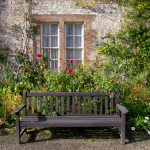




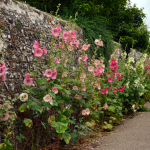

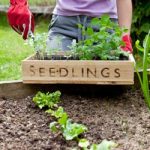


 Whether you’re an avid gardener or just starting out, one of the best ways to improve your outdoor space this year is simple: spend five mindful minutes in your garden every day, paired with your favorite beverage and a notebook.
Whether you’re an avid gardener or just starting out, one of the best ways to improve your outdoor space this year is simple: spend five mindful minutes in your garden every day, paired with your favorite beverage and a notebook. listen to the birds, and take in the sights of dew-kissed leaves.
listen to the birds, and take in the sights of dew-kissed leaves. phone to jot down quick notes. Here are a few things to track:
phone to jot down quick notes. Here are a few things to track: inspired. And when you look back at your notes, you’ll see the evolution of your garden—and yourself as a gardener.
inspired. And when you look back at your notes, you’ll see the evolution of your garden—and yourself as a gardener.

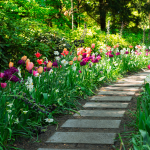
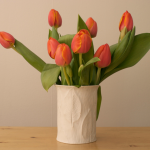
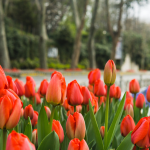
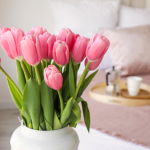
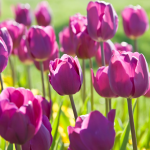
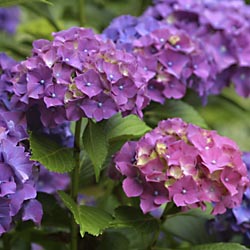
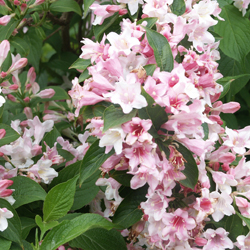 also invite hummingbirds and butterflies to your garden. Its graceful arching branches make Weigela perfect for adding structure and dimension to your landscape.
also invite hummingbirds and butterflies to your garden. Its graceful arching branches make Weigela perfect for adding structure and dimension to your landscape.
